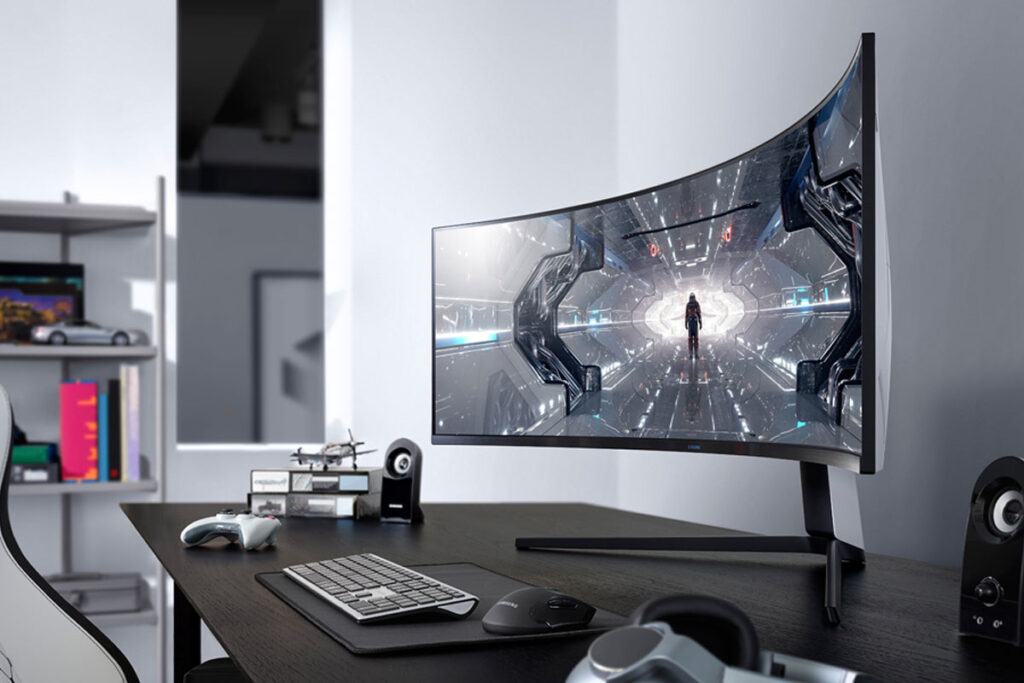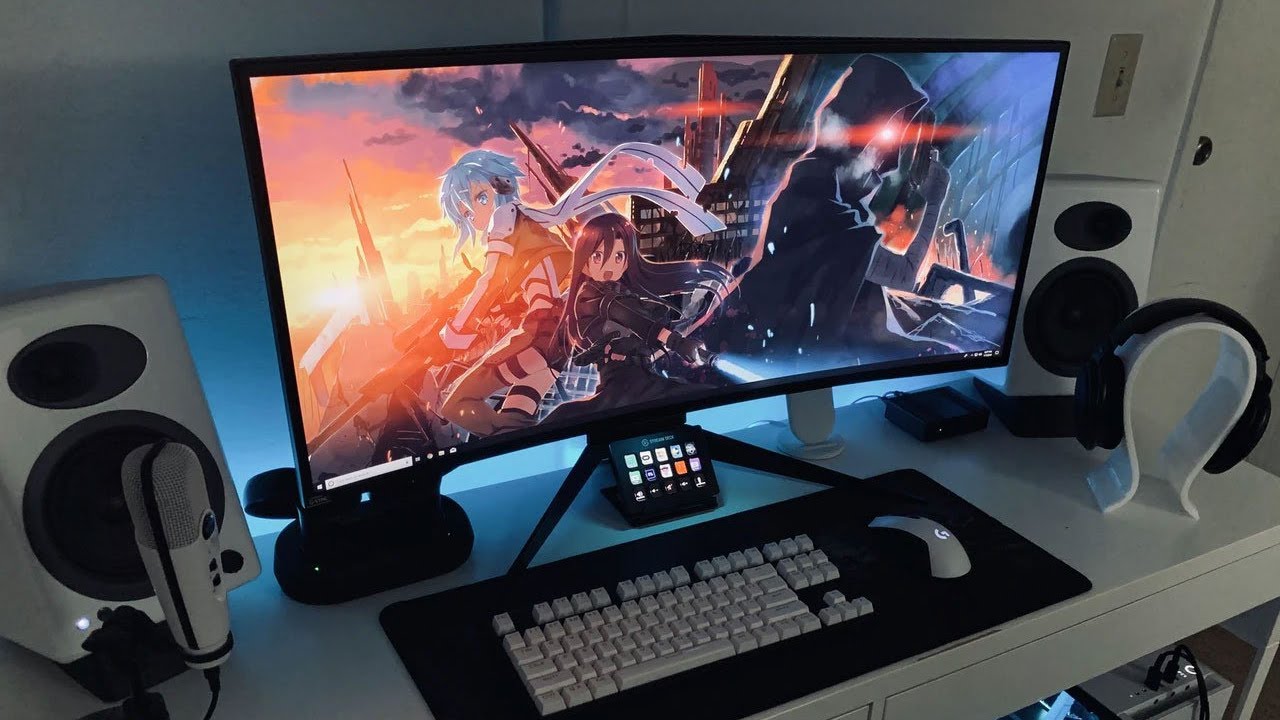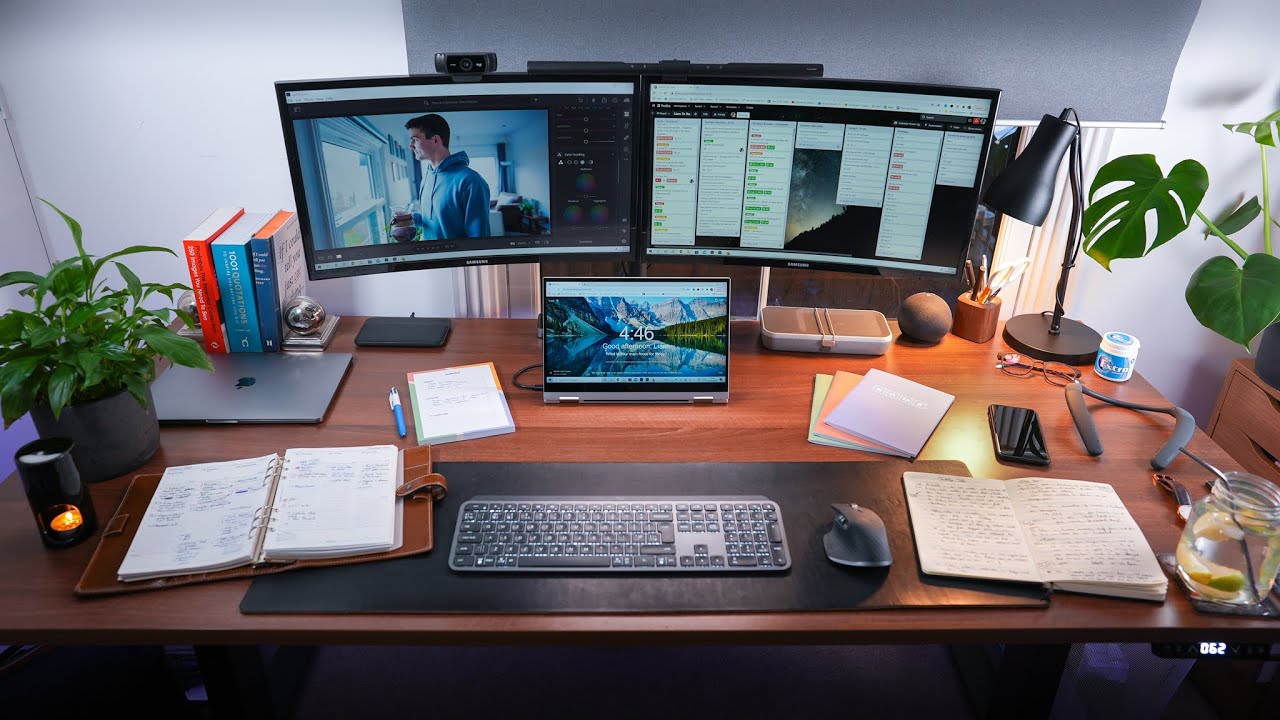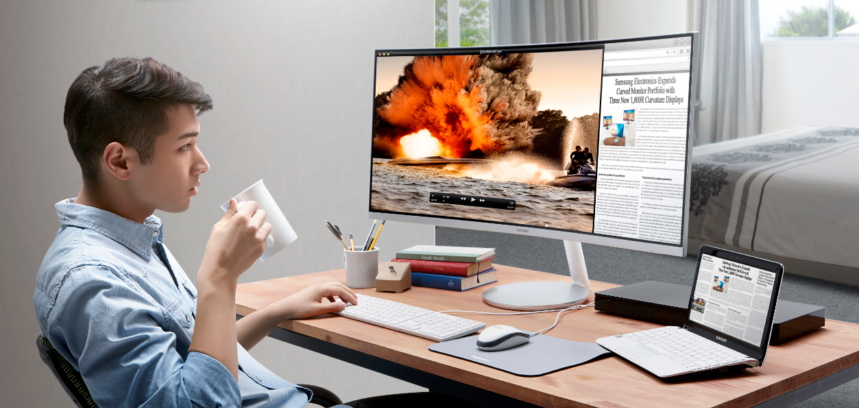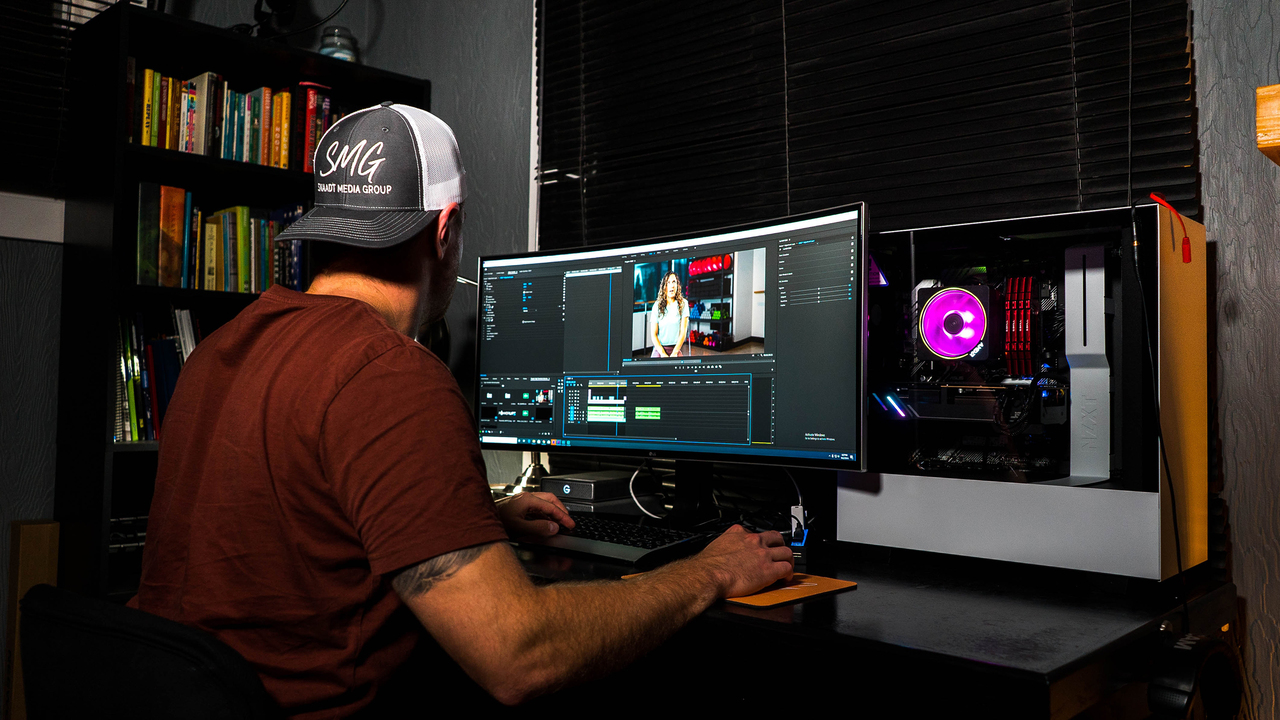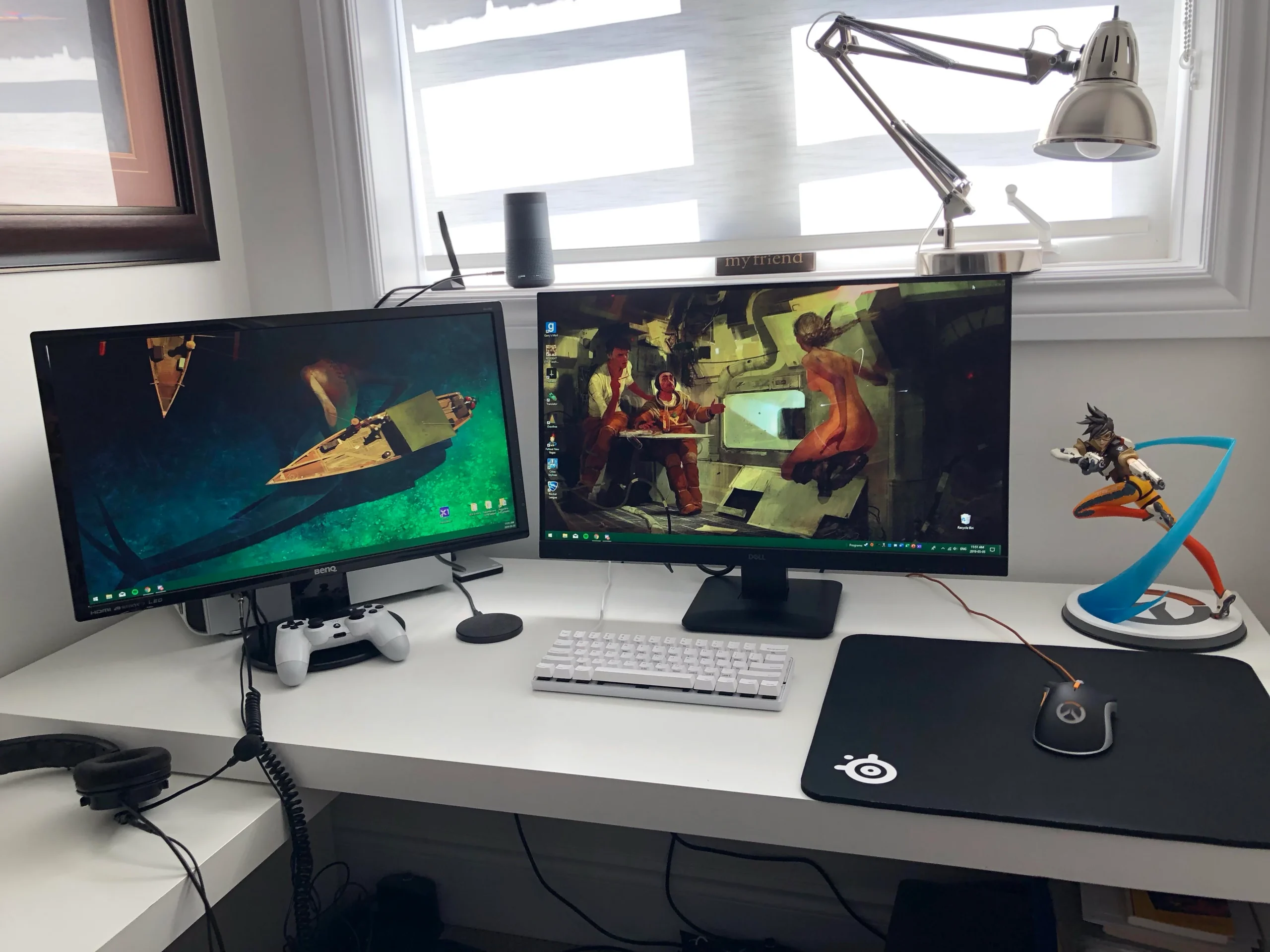As we head into 2024, the world of monitors is more exciting than ever. Whether you’re a gamer looking for lightning-fast refresh rates, a professional needing precise color accuracy, or simply seeking a versatile monitor for both work and play, there’s a perfect screen waiting for you. With rapid advancements in display technology, monitors now come packed with features like 4K resolution, HDR, adaptive sync, and ergonomic designs to make work and gaming more immersive and enjoyable. Let’s explore the top monitor picks for 2024 across different categories to help you find the best one for your needs.
1. Best Monitors for Gaming
LG UltraGear 27GP950-B – The Ultimate 4K Gaming Monitor
For those who take gaming seriously, the LG UltraGear 27GP950-B is a dream come true. With a stunning 4K resolution and 144Hz refresh rate that can be overclocked to 160Hz, it delivers ultra-smooth visuals. Here’s what makes this monitor stand out:
Key Features:
27-inch IPS display with 4K UHD (3840 x 2160) resolution.
NVIDIA G-SYNC and AMD FreeSync Premium Pro compatibility to reduce screen tearing.
HDR10 support for vibrant colors and deep blacks.
1ms response time, ideal for fast-paced games.
This monitor’s incredible detail and responsiveness make it perfect for competitive gamers looking for an edge, as well as for single-player experiences where graphics quality is crucial.
Samsung Odyssey G9 – The Immersive Ultrawide Option
For an unmatched immersive experience, the Samsung Odyssey G9 is a 49-inch curved gaming monitor with a 1000R curvature, mirroring the human eye’s field of view. This feature draws you into the game and enhances your peripheral vision for a realistic experience.
Key Features:
49-inch screen with a 5120 x 1440 resolution.
240Hz refresh rate and a 1ms response time.
Supports NVIDIA G-SYNC and AMD FreeSync Premium Pro.
Quantum Dot technology for accurate color reproduction.
Its impressive ultra-wide screen and immersive curve make it a top choice for gamers who want to feel fully engrossed in their games.
2. Best Monitors for Work and Productivity
Dell UltraSharp U2723QE – Premium 4K for Professionals
Professionals looking for a color-accurate, high-resolution display will appreciate the Dell UltraSharp U2723QE. This 27-inch 4K monitor offers excellent detail and a wide color gamut, which is ideal for creative tasks, data analysis, and other productivity-heavy work.
Key Features:
27-inch 4K UHD (3840 x 2160) resolution.
USB-C connectivity with up to 90W power delivery.
100% sRGB and 98% DCI-P3 color coverage for color precision.
IPS Black technology for deeper blacks and contrast.
With multiple connectivity options, including HDMI, DisplayPort, and USB-C, the Dell UltraSharp is a versatile option for a modern workspace.
Apple Studio Display – Ideal for Mac Users
Apple’s Studio Display is built specifically for Mac users who need a high-quality, integrated setup. With a sleek design and seamless compatibility with Mac devices, this monitor brings Apple’s premium design and functionality to any workspace.
Key Features:
5K Retina Display (5120 x 2880 resolution) for stunning detail.
600 nits brightness for vibrant visuals.
True Tone technology adjusts the color temperature based on ambient lighting.
P3 wide color gamut with 1 billion colors.
It’s an ideal choice for photographers, designers, and video editors who use Mac and require the utmost precision in color reproduction.
3. Best Budget Monitors for Everyday Use
Acer Nitro XV272U – Affordable and Feature-Packed
For those who want a quality monitor without a high price tag, the Acer Nitro XV272U offers an impressive balance between performance and affordability. This 27-inch monitor delivers 1440p resolution, making it perfect for casual gaming, office tasks, and general use.
Key Features:
27-inch QHD (2560 x 1440) resolution.
144Hz refresh rate with AMD FreeSync.
IPS panel for wider viewing angles and color accuracy.
HDR10 support for enhanced contrast and color range.
With a refresh rate higher than standard monitors, the Acer Nitro XV272U is perfect for those who want a solid display for multitasking and casual gaming on a budget.
BenQ GW2480 – Simple and Reliable
The BenQ GW2480 is an excellent choice for users who need a dependable monitor for everyday tasks like browsing, reading, and occasional streaming. With a simple design and eye-care features, it’s a great fit for home offices and study spaces.
Key Features:
24-inch Full HD (1920 x 1080) resolution.
IPS panel for accurate color and wide viewing angles.
Low Blue Light and Flicker-Free technology to reduce eye strain.
Built-in speakers for basic audio needs.
For an affordable, well-rounded monitor that prioritizes eye comfort, the BenQ GW2480 delivers great value for everyday use.
4. Best Monitors for Content Creation
ASUS ProArt PA32UCG – Precision and Quality for Creators
The ASUS ProArt PA32UCG is a high-end monitor tailored for professional content creators who need precise color and excellent HDR performance. With a 4K resolution and HDR 1400 certification, this monitor is designed to bring out every detail.
Key Features:
32-inch 4K UHD (3840 x 2160) resolution.
HDR 1400 certification with peak brightness of 1600 nits.
10-bit color and 99.5% Adobe RGB, 97% DCI-P3 color accuracy.
Mini LED backlight with 1152 local dimming zones for deep contrast.
From photographers to video editors, this monitor is a top pick for any creative professional who requires accurate and vibrant color reproduction.
LG UltraFine OLED Pro – Stunning Visuals for Visual Artists
The LG UltraFine OLED Pro is perfect for visual artists and designers who want the precision of OLED technology. This monitor brings unparalleled contrast, with true blacks and vibrant colors that make it perfect for visual and graphic design.
Key Features:
27-inch 4K OLED display.
DCI-P3 and Adobe RGB color spaces for color fidelity.
HDR10 support and true black levels with OLED technology.
Lightweight and compact design.
OLED monitors are rare, especially at the professional level, making this an excellent choice for artists who want to bring out the best in their digital artwork.
5. Best Monitors for Dual-Screen Setups
HP Z27k G3 – Seamless Connectivity and Dual Setup-Friendly
For those who thrive in a dual-screen setup, the HP Z27k G3 offers sleek design and simple connectivity options, making it easy to combine with another monitor. It’s a great choice for professionals who need a smooth workflow with multiple screens.
Key Features:
27-inch 4K UHD resolution with IPS panel.
USB-C connectivity with 100W power delivery, allowing for a clean desk setup.
Slim bezels, ideal for dual-monitor configurations.
Adjustable stand for ergonomic setups.
Its versatility and high resolution make the HP Z27k G3 a solid choice for dual setups, whether for coding, designing, or financial analysis.
Choosing the Right Monitor for Your Needs
In 2024, choosing the best monitor means aligning your display features with your primary activities. Here are some quick pointers:
For Gamers: Focus on refresh rate and response time. A high refresh rate (144Hz and above) ensures smooth motion in fast-paced games, while low response times help avoid ghosting.
For Professionals: Look for high color accuracy and resolution. Creative work often requires precise color calibration, so monitors with high Adobe RGB and DCI-P3 coverage are beneficial.
For Everyday Use: A good Full HD monitor with eye-care features is usually sufficient, and budget models can provide excellent value for basic tasks.
For Dual Setups: Choose monitors with thin bezels and good connectivity options like USB-C, so you can set up two monitors seamlessly for an expansive workspace.
Final Thoughts
Investing in a good monitor can significantly enhance your productivity, gaming experience, or creative projects. With 2024’s lineup, there’s no shortage of options that cater to various needs, from immersive gaming monitors to high-resolution displays for professionals. Whether you’re gaming, working, or creating, the right monitor can elevate your experience and provide a comfortable, efficient setup for years to come.
FAQs
What resolution should I look for in a monitor?
Answer: Resolution depends on your needs and budget. For general use and budget setups, Full HD (1080p) is usually sufficient. For professional work or higher detail, consider 4K (3840 x 2160). Gamers often benefit from Quad HD (1440p) since it offers a balance between quality and performance. For large screens and multitasking, higher resolutions like 4K or even 5K are ideal.
What’s the difference between refresh rate and response time?
Answer: Refresh rate, measured in hertz (Hz), refers to how many times per second the screen updates. Higher refresh rates (e.g., 120Hz, 144Hz) are smoother and beneficial for gaming. Response time, measured in milliseconds (ms), is the time it takes for pixels to change colors. Lower response times (e.g., 1ms or 2ms) reduce ghosting, which is also important for gamers.
What are the advantages of curved monitors?
Answer: Curved monitors create a more immersive viewing experience, especially for gaming, as they mimic the natural field of vision. They reduce eye strain over time and enhance peripheral vision. However, they’re best for single-person viewing and can be challenging in dual-monitor setups.
Is an ultrawide monitor better than a dual-monitor setup?
Answer: Ultrawide monitors are ideal for a seamless, single-screen experience without the bezel gap between two screens. They work well for multitasking and gaming. However, dual monitors offer flexibility, as you can mix resolutions and orientations. Choosing between the two depends on your work habits and preference for screen real estate.
What is HDR, and is it necessary?
Answer: HDR (High Dynamic Range) improves color range and contrast, making images more vibrant. It’s beneficial for content creators, gamers, and anyone who watches HDR-supported media. Not all content supports HDR, so if you’re not working with HDR media or playing HDR-enabled games, it may not be essential.
What is adaptive sync technology (G-SYNC/FreeSync), and do I need it?
Answer: Adaptive sync technologies like NVIDIA G-SYNC and AMD FreeSync reduce screen tearing and stuttering by synchronizing the monitor’s refresh rate with the GPU’s frame rate. They’re valuable for gaming, especially in fast-paced games. If you’re a gamer, adaptive sync can greatly improve your experience.
Are USB-C monitors worth it?
Answer: USB-C monitors are ideal for modern work setups, as they offer single-cable solutions for display, data transfer, and charging. They’re particularly useful for laptop users who need to connect multiple devices or want a clean desk setup. While USB-C monitors are typically pricier, the convenience often justifies the cost.
Is OLED better than IPS for monitors?
Answer: OLED screens offer superior contrast and true black levels, making them excellent for creative work and media consumption. However, they are more expensive and can suffer from burn-in with static images. IPS monitors, while offering less contrast, provide good color accuracy and viewing angles without the risk of burn-in, making them popular for general use and professional work.
What size monitor is best for work and productivity?
Answer: For most productivity tasks, 27-inch monitors offer a good balance between screen space and desk fit. For multitasking or split-screen work, 32-inch or ultrawide monitors may be more suitable. It’s essential to consider both your workspace and your needs—bigger isn’t always better if it’s uncomfortable for your setup.
How does monitor ergonomics matter, and what should I look for?
Answer: Ergonomic features, like height adjustment, tilt, swivel, and pivot, allow you to customize your monitor’s position to reduce neck and eye strain. Look for monitors that provide these adjustments, especially if you spend long hours working or gaming. An adjustable monitor can prevent discomfort and improve productivity.
Are gaming monitors good for productivity and office work?
Answer: Yes, gaming monitors often have high refresh rates and good color accuracy, which can benefit productivity tasks. However, they may lack certain professional features like extensive color calibration. If your primary use is for office tasks, a productivity-focused monitor may be more cost-effective, but gaming monitors can be versatile for both work and play.
How do I choose between different panel types (IPS, VA, TN)?
Answer: Each panel type has strengths:
IPS (In-Plane Switching): Offers great color accuracy and viewing angles, making it ideal for creative work and general use.
VA (Vertical Alignment): Provides deep contrast, making it great for watching movies, though it may have slower response times.
TN (Twisted Nematic): Known for fast response times, it’s popular with gamers, though it has lower color accuracy and viewing angles.
Is 4K necessary for a monitor?
Answer: 4K offers a high level of detail and is especially useful for creative work, video editing, and multitasking. However, it requires a powerful graphics card to run smoothly, especially for gaming. For general productivity and gaming at higher frame rates, 1440p may be a more practical choice.
What are the best monitors for eye comfort?
Answer: Look for monitors with Low Blue Light and Flicker-Free technology, which help reduce eye strain. Adjustable brightness and anti-glare coatings also help in bright environments. Some monitors even offer specific modes for reading or working in low-light conditions to enhance comfort.
How much should I expect to spend on a good monitor in 2024?
Answer: Prices vary widely based on features:
Budget: Around $150–$300 for 1080p monitors with basic features.
Mid-Range: $300–$600 for 1440p or entry-level 4K monitors.
High-End: $600 and up for 4K, HDR, or specialized monitors (like gaming or professional monitors).
Selecting the right monitor largely depends on your specific needs, so it’s worth considering which features matter most to you before making a purchase.


